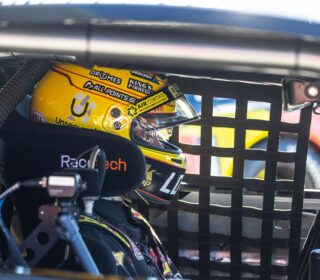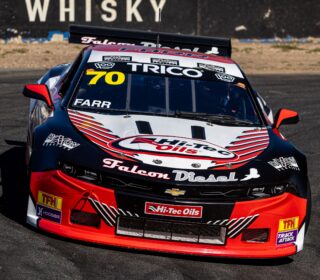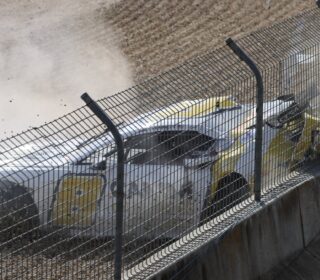A HISTORY OF THE GOLD STAR
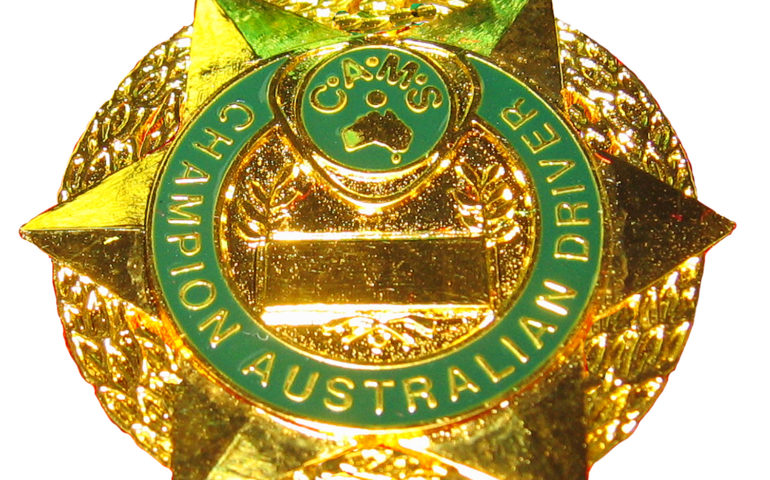
IT’S one of the most prestigious and long-running awards in Australian Motorsport history – and in 2020 it’s back; the Australian Drivers Championship for the Gold Star award returns with S5000 this year.
WORDS: Richard Craill
The actual genesis of how the prize of a ‘Gold Star’ came to be awarded to Australia’s driving champion – the top racer in the top formula of open-wheel racing – came to be is somewhat murky, but its naming is linked to a similar award in the United Kingdom.
The British Racing Drivers club inaugurated their own Gold Star in 1928 to recognise outstanding achievement by their own members in motor sport competition around the world, including Grand Prix racing, land speed records and endurance racing disciplines.
The Australian version came from the same concept; award Australia’s top driver which, in the 1950s, was not someone racing tin tops. This was an open-wheel award.
GENESIS
The first Gold Star was awarded to the 1957 Australian Drivers Champion Lex Davison, who won the title by sweeping six of the nine rounds, including the Australian Grand Prix at the Caversham circuit in West Australia.
The first seven seasons of the Gold Star were contested under the broad banner of ‘Formula Libre’, however a majority of cars were essentially the same as Formula 1 cars competing in the World Championship – Davison winning in a Ferrari 500, Stan Jones taking the 1958 championship in a Maserati 250F.
Early champions included some of the most famous names in Australian open-wheel racing; Len Lukey, Alec Mildren, Bill Patterson and Bib Stillwell, who won his first two titles in the final two years of the Formula Libre era.
AUSTRALIAN NATIONAL FORMULA / AUSTRALIAN F1
CAMS introduced new regulations in 1964, dubbed the Australian National Formula that tightened regulations but maintained many of the same cars. Brabham dominated this era, the famous marque winning the first two titles run under the ANF regulations with Stillwell behind the wheel. His four straight titles would only ever be matched by one driver.
Spencer Martin won his two titles driving a Brabham BT11 before in 1968 Kevin Bartlett burst onto the scene, taking his first title and backing it up a year later in the first year of a new regulation set.
AUSTRALIAN FORMULA 1
Australian Formula 1 was introduced in 1969 and began as essentially a rebrand of the previous Australian National Formula. However, a year later the regulations changed to allow 5.0-litre production based engines and, as such, the F5000 era was born.
If there’s an era where the Gold Star and Australian Drivers Championship can be considered at its peak – or at least most famous – it was this one.
This was the era of the big bangers and famous names: Bartlett, Leo Geoghegan, Frank Matich, John McCormack and the legendary Alfredo Costanzo the biggest names; Matich, Elfin, Lola and McLaren the significant constructors.
F5000’s reign at the top ended in 1983, when ‘AF1’ replaced by smaller-capacity cars running to the Formula Pacific regulations.
Regardless of the era, Costanzo was king of the early 1980s in Aussie open-wheel racing. He defeated Jon Davison and John Bowe to win the 1980 title in a Lola T430, won the shortened ’81 series at a canter and then when the regulations changed in 1982 he edged out a hotshot young-gun from Tasmania named John Bowe to win the title by four points.
In 1983 he won four of the six rounds aboard a Tiga FA81 Ford to beat John Smith and Andrew Miedecke to the crown, his fourth.
TROUBLED TIMES
A FORMAL rule change in 1984 saw the international Formula Mondial – Formula Atlantic in the ‘States – adopted. The Ralt RT4 was the car to have and John Bowe the car to beat.
The Tasmanian injected himself into the national landscape by winning the ’84 and ’85 titles – beating the great Costanzo in the first year and Peter Hopwood a year later.
Bowe’s shift to Touring Cars with Volvo opened up the field in 1986, with Graham Watson’s Ralt beating Hopwood’s similar car to the title – however troubled times were ahead for the storied prize. Uninspiring cars and the rise and rise of Touring Car racing had shifted the focus away from open wheel racing and interest was dwindling.
The 1987 championship was contested over just a single race, held as a key support act to the Australian Grand Prix in Adelaide that November. David Brabham won, edging out Rohan Onslow and Mark Mclaughlin in a 15-lap race run for Formula Two cars.
A six-round series was held for F2 cars the following year – won by Onslow – but change was in the wind and a new Australian-based category was in the pipeline.
FORMULA HOLDEN
THE AUSSIE Formula Holden class was introduced in 1988 and assumed the mantle of Australia’s top open wheel category. Though it took a few years to grow, the subsequent era would complete a transition of the category to a place where young drivers gained their racing stripes before progressing to a Touring Car career, or overseas.
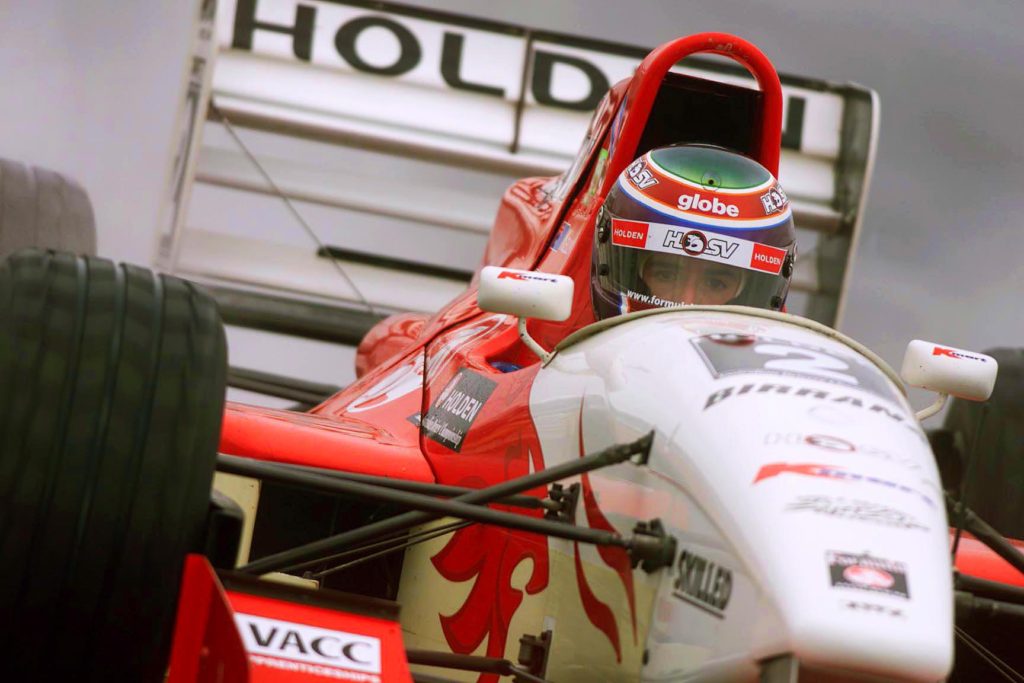
Simon Kane won his first and only title in 1990 however it was young Mark Skaife who was making people pay attention – he finished third on his wings and slicks debut and but a year later would win his first title while at the same time racing as a factory Nissan pilot in Touring Car competition.
Skaife became the first person to win the Australian Drivers Championship and Australian Touring Car Championship in the same year when he won both titles in 1992, before backing it up with a third crown in ’93 – his last in the category.
Paul Stokell beat Greg Murphy to the ’94 crown – the first for the storied Birrana Racing team from South Australia. It would not be their last – Birrana won again in 1995 and ’96 with Stokell to Match Skaife’s triple titles.
1997 was the year of the young-guns; Bright, Bargwanna and a young kiwi named Dixon locking out the top three. Dixon won the title the following year and within two seasons was in an Indy Car in America.
Back-to-back titles for Simon Wills followed as Birrana returned to the top, their five titles standing as the most by a single team to that point.
Rick Kelly made it six a year later in a Holden-backed entry, while Will Power’s 2002 title helped his aspirations of an international career which, as we know, has turned out rather well.
The series was rebranded Formula 4000 the following year but was in decline; pressure from Formula 3 racers and organisers and a constant debate in the media about the status of the Gold Star putting pressure on the class.
Daniel Gaunt and Neil McFadyen won the last two titles in the category and while the ‘Formula Holden’ everyone knew would continue, the Gold Star was going elsewhere.
FORMULA 3
Australian F3 inherited the Australian Drivers championship mantle in 2005 and ushered in a new era of international drivers tasting success.
Ben Clucas became the first international – as in, not from Australia or New Zealand – to win the title in 2006.
In 2007, Leanne Tander helped celebrate the 50th anniversary of the award by becoming the first woman to win a race in the history of the Australian Drivers Championship, though missed out on the title in a thrilling battle that ultimately went to Tim Macrow.
The F3 era was highlighted by competitive title battles and a host of international imports making their mark. James Winslow won in 2008, Joey Foster in 2009 and Ben Barker a thrilling title in 2010, beating his teammate Mitch Evans by a single point on account of setting the fastest lap in the final race of the title year at Sandown.
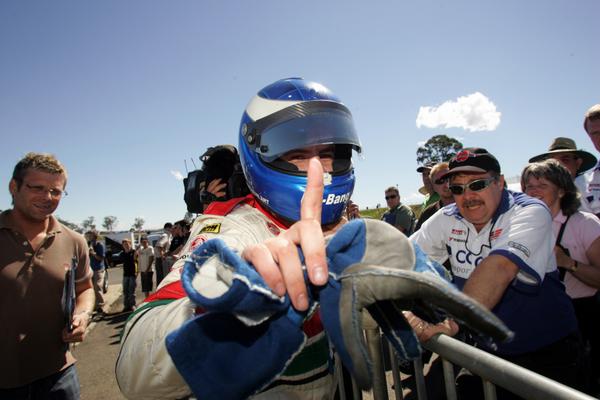
F3, however, was under pressure and while the racing was high quality, in the eyes of administrators grid sizes – forever an open wheel issue in Australia – weren’t up to scratch.
Simon Hodge’s final title in 2014 – a record seventh for Adelaide squad Team BRM – was the last. Mid way through the 2015 title race, somewhat controversially, CAMS ‘parked’ the award and an unbroken 58-year streak of awarding Australia’s top open wheel driver came to a premature end.
HALL OF FAME – AUSTRALIAN DRIVERS CHAMPIONS
| Alfredo Costanzo | 4 |
| Bib Stillwell | 4 |
| John McCormack | 3 |
| Mark Skaife | 3 |
| Paul Stokell | 3 |
| James Winslow | 2 |
| John Bowe | 2 |
| Kevin Bartlett | 2 |
| Max Stewart | 2 |
| Rohan Onslow | 2 |
| Simon Wills | 2 |
| Spencer Martin | 2 |
| Tim Macrow | 2 |
| Aaron Caratti | 1 |
| Alec Mildren | 1 |
| Ben Barker | 1 |
| Ben Clucas | 1 |
| Bill Patterson | 1 |
| Chris Gilmour | 1 |
| Daniel Gaunt | 1 |
| David Brabham | 1 |
| Frank Matich | 1 |
| Graham McRae | 1 |
| Graham Watson | 1 |
| Jason Bright | 1 |
| Joey Foster | 1 |
| John Leffler | 1 |
| Jonnie Walker | 1 |
| Len Lukey | 1 |
| Leo Geoghegan | 1 |
| Lex Davison | 1 |
| Neil McFadyen | 1 |
| Rick Kelly | 1 |
| Scott Dixon | 1 |
| Simon Hodge | 1 |
| Simon Kane | 1 |
| Stan Jones | 1 |
| Will Power | 1 |
ALL TIME RACE WINNERS
| 1 | James Winslow (Formula 3) | 30 |
| 2 | Tim Macrow (Formula 3) | 28 |
| 3 | Simon Wills (Formula Holden) | 23 |
| 4 | Paul Stokell (Formula Holden) | 17 |
| 5 | Mark Skaife (Formula Holden) | 15 |
| 6 | Alfredo Costanzo (Formula 5000) | 15 |
| 7 | John Bowe (Formula Mondial) | 14 |
| 8 | Ben Clucas (Formula 3) | 12 |
| 9 | Rick Kelly (Formula Holden) | 12 |
| 10 | Kevin Bartlett (Australian National Formula) | 12 |



